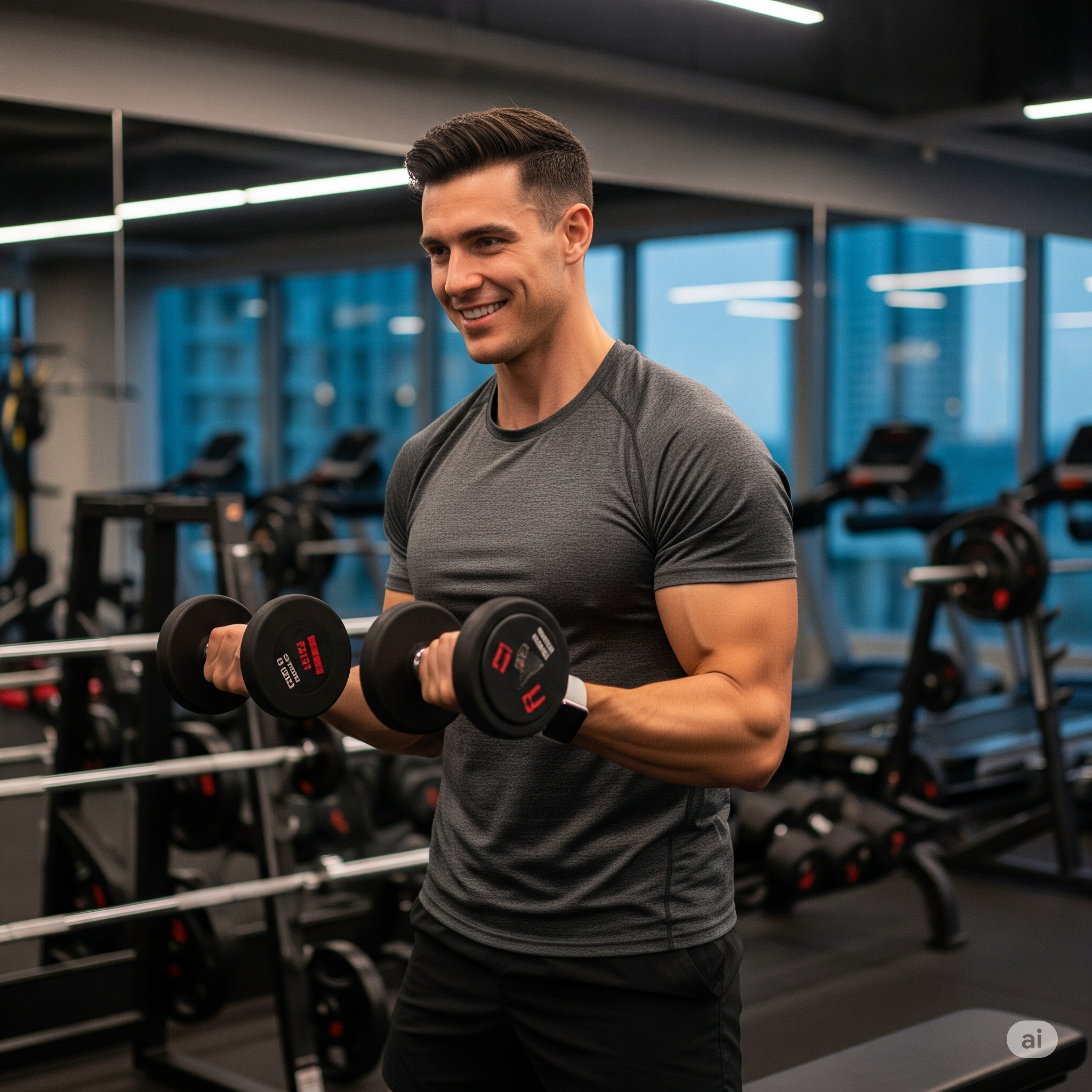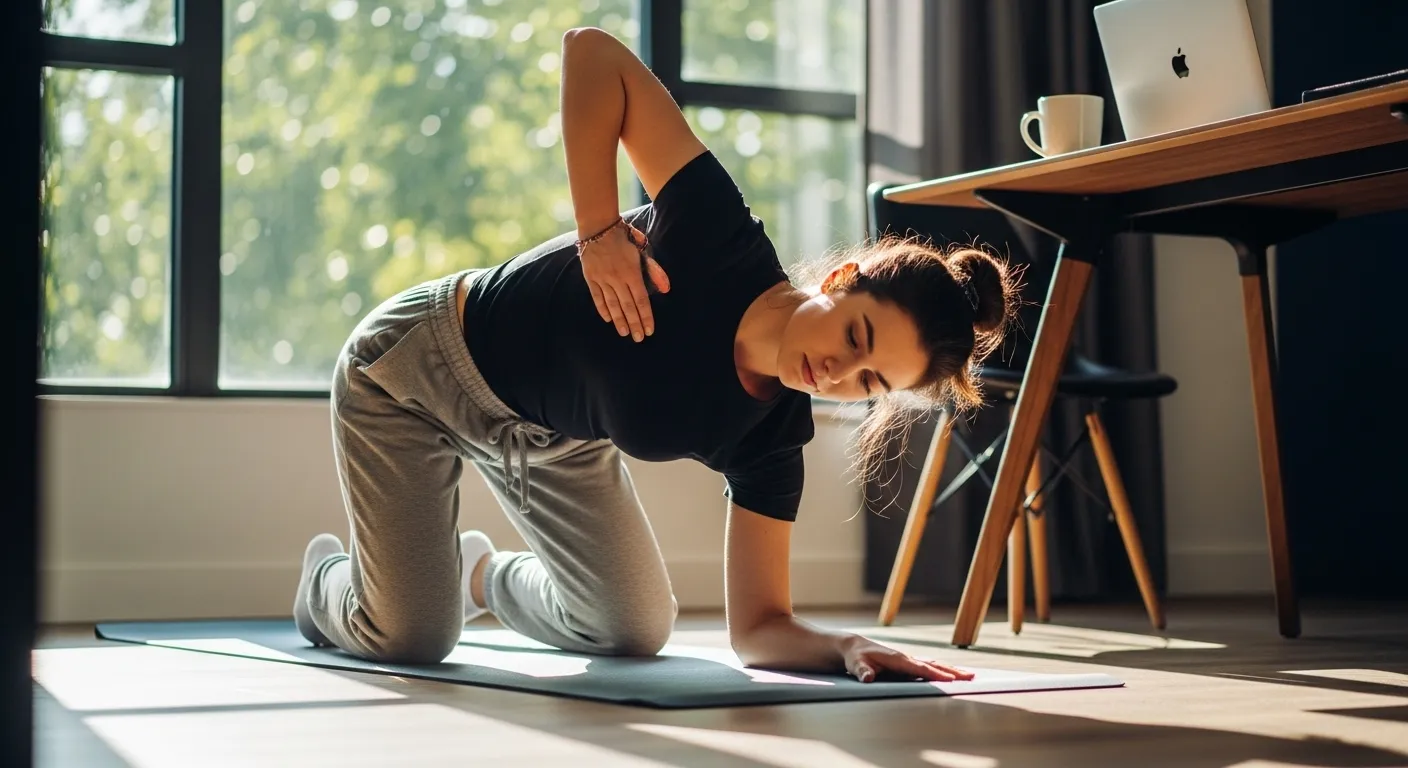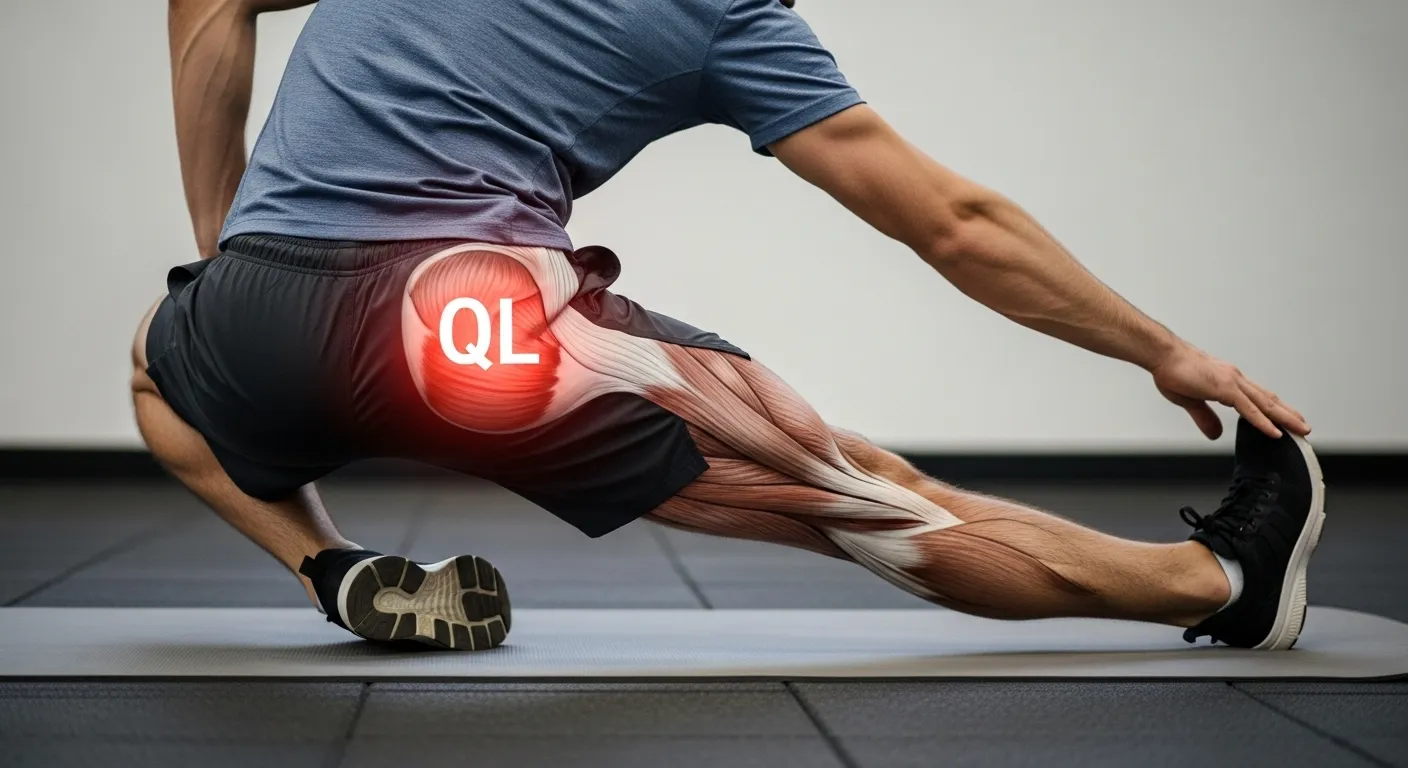Trapezius Stretch Guide: Reduce Muscle Tension Today

You know that tight, heavy feeling that sits right at the top of your shoulders or crawls up the back of your neck? Yeah, that’s your trapezius muscle yelling for a break. Most people don’t even realize how much tension they hold there until it starts burning or aching after a long day at the desk.
The truth is, your traps work harder than you think. They help lift, pull, turn, and stabilize your head and shoulders all day long. And when you’re stressed, hunched over your phone, or working on your laptop for hours, they tighten up like crazy. A good trapezius stretch can change everything, less pain, better posture, even fewer headaches.
I’ve worked with clients for years, office folks, lifters, drivers, teachers, and everyone has the same complaint: “My neck always feels stiff.” So in this post, I’ll walk you through what’s actually going on, and how to fix it step by step.

Meet Your Trapezius: The Muscle You’re Always Using
The trapezius (or “traps”) covers more area than most people realize. It starts from the base of your skull, runs across your shoulders, and goes down to about the middle of your back.
It’s split into three main parts:
- Upper traps: the ones that pull your shoulders up and help move your neck.
- Middle traps: they squeeze your shoulder blades together.
- Lower traps: they pull your shoulders down and keep everything in balance.
When this muscle gets tight, you’ll feel it almost instantly, tension headaches, a stiff neck, sore shoulders, or that dull ache between your shoulder blades. It’s not always from working out either. Most of the time, it’s just life, poor posture, stress, or sitting too long in one position.

Why the Traps Get So Tight
I’ve noticed the same three things causing trap tension over and over again:
1. Sitting too long or slouching.
That forward head position, chin sticking out, shoulders rounded, it puts a ton of pressure on your upper traps.
2. Stress.
We carry emotional tension in the shoulders more than anywhere else. When you’re stressed, you unconsciously lift your shoulders toward your ears.
3. Bad movement habits.
Heavy lifting with poor form or not moving enough at all. Both can cause one side to tighten and the other to weaken.
Here’s a quick table I sometimes use with clients:
| Cause | Effect | Quick Fix |
|---|---|---|
| Long screen time | Tight upper traps | Do 1 to 2 neck stretches every hour |
| Carrying heavy bags | One side gets overworked | Switch shoulders often |
| Stress & worry | Clenched shoulders | Deep breathing + gentle shoulder rolls |
| Poor posture | Head-forward strain | Raise screen and adjust chair |
Simple stuff, but it makes a difference fast.
The Best Trapezius Stretch Exercises
Alright, let’s go over the ones that actually work. You don’t need equipment. Just a little space and a few quiet minutes.
1. Seated Upper Trapezius Stretch
Probably the easiest way to loosen up the top of your traps.
Steps:
- Sit tall in a chair, spine straight.
- Hold the side of your seat with one hand.
- With the other hand, gently tilt your head to the opposite side.
- Keep your shoulders relaxed and breathe.
- Hold for about 25 seconds, switch sides.
This neck and shoulder stretch is perfect for quick breaks during the workday.

2. Shoulder Rolls and Shrugs
Movement is just as good as static stretching sometimes. I call these “reset moves.”
Try this:
- Roll your shoulders up, back, and down, slow and steady.
- Do ten backward, then ten forward.
- Then shrug both shoulders up high and drop them down loose.
You’ll feel warmth spreading in your upper back, that’s blood flow waking up tight muscle fibers. Great for quick tension release exercises.
3. Wall Stretch for the Upper Back
This one hits both your upper traps and your mid-back.
Here’s how:
- Stand facing a wall, arms out straight, hands on the wall.
- Step your feet back a little.
- Drop your chest down slightly until you feel a pull across your shoulders.
- Hold for 20 to 40 seconds and breathe deeply.
It’s one of my go-to’s for upper back pain relief, especially for people who type or drive a lot.
4. Doorway Stretch
If your chest muscles get tight, they’ll pull your shoulders forward and make your traps tense. This stretch opens things up again.
Steps:
- Stand in a doorway with elbows bent at 90 degrees.
- Rest your forearms on each side of the frame.
- Step forward slowly until you feel your chest open.
- Hold for half a minute.
You’ll feel lighter instantly. Works perfectly as part of your home stretches for shoulders.
5. Chin Tuck Stretch
Don’t let the name fool you, it’s simple but powerful. This one retrains your posture.
Steps:
- Sit or stand tall.
- Gently tuck your chin straight back (like making a double chin).
- Hold five seconds, then relax.
- Repeat 10 times.
I tell people to do this one while waiting for their computer to load or during calls. It fights that forward-head posture and reduces shoulder and neck tension over time.
Mobility Work for the Trapezius
Stretches loosen, but mobility keeps the muscle balanced.
Here are a few easy trapezius mobility exercises to try:
- Scapular squeeze: Hold for three seconds as you pull your shoulder blades together.
- Arm circles: Slow, smooth rotations forward and backward.
- Wall angels: Put your back against a wall and stand there. Like a snow angel, move your arms up and down.
Do these daily for a week and you’ll notice your posture improving without even thinking about it.

Massage and Release for Deeper Tension
If stretching doesn’t get rid of the knots, try trapezius muscle massage. You can do it yourself using a ball or foam roller.
Here’s a simple trick:
- Grab a tennis ball.
- Place it between your upper back and the wall, right on the sore spot.
- Lean in gently and roll in small circles.
- Breathe and hold pressure on tight areas for about 20 to 30 seconds.
That’s one of the easiest muscle tension release techniques I teach. Feels uncomfortable at first, but the relief after is worth it.
For chronic tension, a massage therapist can dig deeper, especially if you get frequent headaches or shoulder tightness that won’t quit.
Quick Office Stretches for Neck and Shoulder Pain
Here are simple easy stretches for work that I recommend during long computer sessions:
| Stretch | How to Do It | When to Try It |
|---|---|---|
| Neck tilt | Drop one ear to your shoulder, hold 20 sec | During long calls |
| Shoulder rolls | Move shoulders up/back/down 10x | Every 45 minutes |
| Chin tuck | Pull chin back gently | While typing |
| Seated twist | Turn torso, grab chair arm, breathe | Every 2 hours |
| Overhead reach | Stretch arms up, lean side to side | After meetings |
Tiny breaks like these can keep your traps from turning into stone by the end of the day.
Strength Helps Too
Here’s something a lot of people miss, if you only stretch and never strengthen, your traps might keep tightening up again.
I always recommend adding a few light strength moves:
- Dumbbell shrugs (light weights, higher reps).
- Resistance band pull-aparts.
- Prone Y and T raises (great for posture).
These build endurance and help the lower traps support the upper ones, which prevents future pain. It’s the balance that matters.
Breathe: Literally
You’d be surprised how often tight traps come from poor breathing habits. When you breathe shallowly from your chest, your traps do extra work.
Try this instead:
- Sit tall, shoulders relaxed.
- Put a hand on your belly.
- Inhale through your nose, making your stomach rise.
- Exhale slowly.
A few deep breaths like that can drop your shoulders instantly. It’s a small, quiet tension release exercise that anyone can do.

A Simple Daily Stretch Plan
If you like having a routine, this one works for most people I’ve coached:
| Time | Exercise | Duration |
|---|---|---|
| Morning | Seated upper trap stretch | 30 sec each side |
| Midday | Shoulder rolls & wall stretch | 1 to 2 minutes |
| Afternoon | Doorway stretch | 30 seconds |
| Evening | Chin tuck + deep breathing | 2 minutes |
That’s under five minutes total, and you’ll feel lighter by day three.
Mistakes I See All the Time
A few notes so you don’t undo your progress:
- Don’t pull too hard on your head,gentle is key.
- Don’t stretch while holding your breath, that keeps tension in.
- Avoid slouching, a straight spine helps the stretch hit the right spot.
- Warm up a bit before deeper stretches, maybe shoulder rolls first.
If it hurts sharply or sends tingling down your arm, stop. That could be a nerve issue.
When to Get It Checked
If stretching doesn’t help, or pain shoots down your arm, or you get headaches that start at the base of your skull, don’t ignore it.
That might mean a pinched nerve, or cervical spine issue. A physical therapist or chiropractor can check posture, joint alignment, and muscle balance. Sometimes a few guided sessions can fix years of discomfort.
FAQs
1. Why does my trapezius get tight?
Usually from stress, bad posture, or staying in one position too long.
2. How often should I stretch it?
Once or twice a day if you’re sitting a lot. After workouts is good too.
3. Can these stretches stop headaches?
Yes, many tension headaches start from tight traps and neck stiffness.
4. Can I do these at work?
Absolutely. Gentle versions of the office stretches for neck are fine even while sitting.
5. How long till I feel better?
Some relief happens right away, but consistent stretching over a week makes a big difference.

I’m Benjamin Clark, dedicated to elevating your athletic performance. Get targeted fitness plans, injury prevention techniques, sports psychology insights, and the latest in nutrition. Let’s train smarter.



